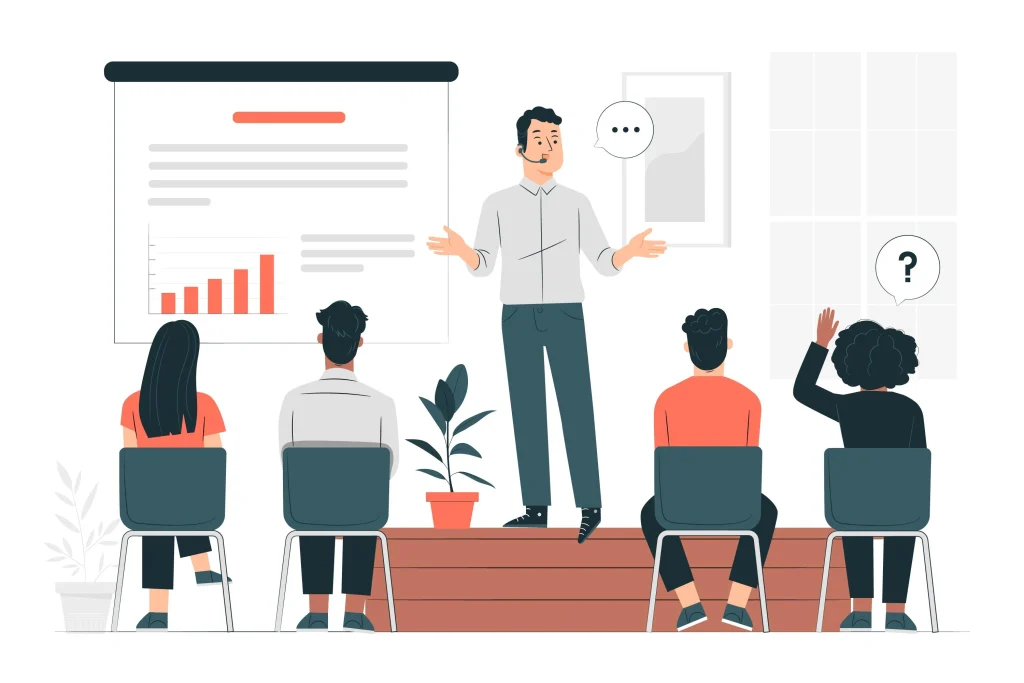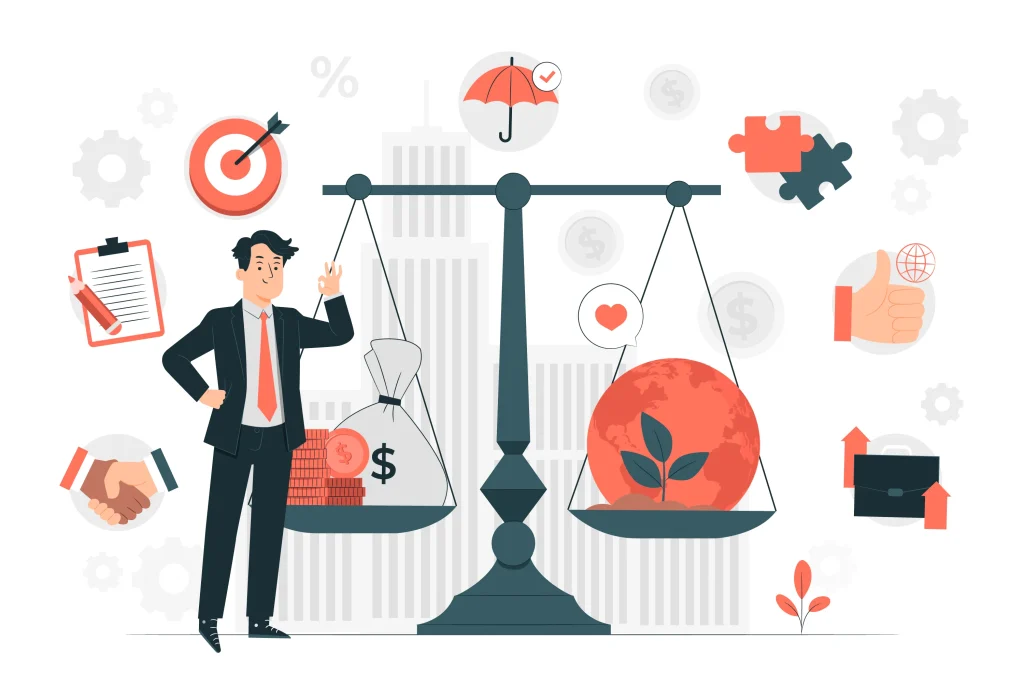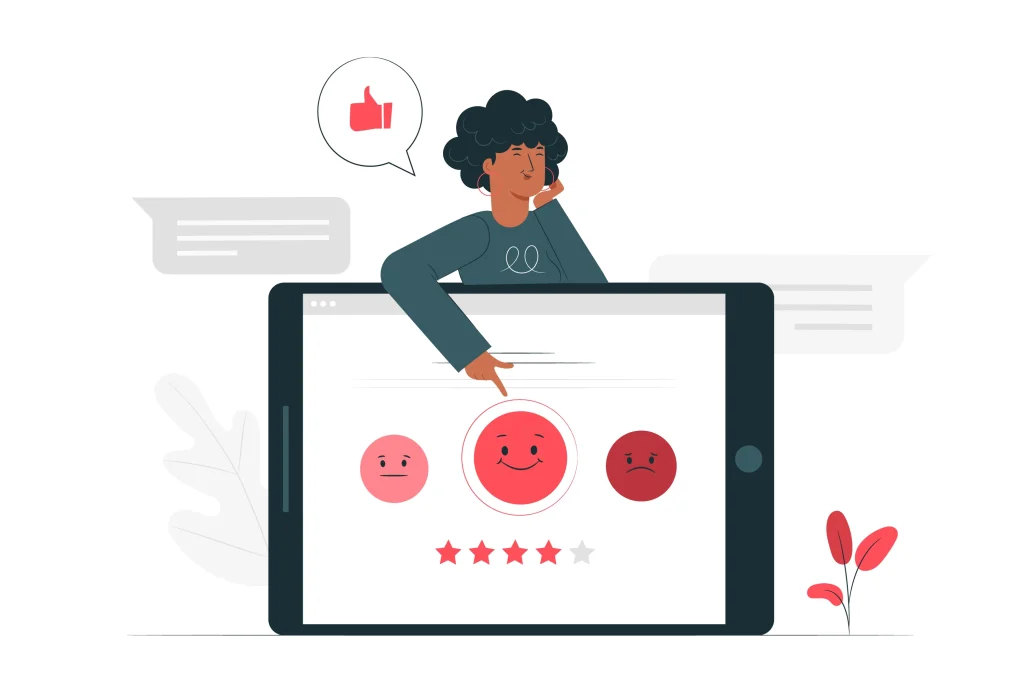
Effective team management is a linchpin for success in the dynamic landscape of small companies. The intricate dance of personnel coordination, skill development, and fostering a harmonious work environment falls under the purview of Human Resources (HR). Small companies, often characterized by their agility and close-knit teams, necessitate a nuanced approach to team management beyond conventional practices. This article delves into comprehensive team management strategies tailored for small companies, spotlighting HR professionals’ pivotal role in nurturing success.
Clear Communication
In the compact setting of small teams, communication is the cornerstone of success. HR professionals must facilitate transparent communication channels, ensuring team members understand their roles, responsibilities, and project expectations. Regular team meetings, one-on-one sessions, and collaborative tools are essential for aligning everyone.
Importance of Clear Communication:
- Understanding Roles and Responsibilities:
- In a small team, each member’s role is significant, and there is often a need for individuals to wear multiple hats. Clear communication ensures that every team member understands their specific responsibilities, reducing the likelihood of confusion or overlapping duties.
- Project Expectations:
- Clearly communicating project expectations is vital for achieving goals and deadlines. HR can play a pivotal role in facilitating discussions about project objectives, timelines, and deliverables. This ensures that everyone is on the same page and can contribute effectively to the project’s success.
- Feedback and Collaboration:
- Open communication channels enable the exchange of feedback, ideas, and insights. HR should encourage a culture where team members feel comfortable sharing their thoughts and providing constructive feedback. This fosters collaboration and innovation within the team.
- Conflict Resolution:
- Miscommunication can lead to conflicts within a team. HR professionals should be vigilant in identifying and addressing conflicts promptly. This may involve facilitating open dialogues, mediating disputes, and ensuring that communication breakdowns are resolved to maintain a harmonious working environment.
Strategies for Achieving Clear Communication:
- Regular Team Meetings:
- Scheduled team meetings provide a platform for discussing ongoing projects, sharing updates, and addressing concerns. HR can organize and facilitate these meetings to ensure that relevant information is communicated to all team members.
- One-on-One Sessions:
- Individualized communication is essential, especially when discussing personal goals, performance feedback, or addressing specific concerns. HR can conduct regular one-on-one sessions with team members to provide personalized support and address any issues that may not be suitable for a group setting.
- Collaborative Tools:
- In the age of digital communication, utilizing collaborative tools can enhance team interaction. HR can implement project management software, messaging platforms, and shared documents to facilitate seamless communication and document sharing among team members.
- Clear Documentation:
- HR can establish and promote the use of clear documentation for projects, processes, and policies. This ensures that information is accessible to all team members, reducing the risk of misunderstandings and providing a reference point for everyone.
- Active Listening:
- Encouraging active listening is crucial for effective communication. HR can conduct training sessions to enhance active listening skills within the team, ensuring that team members fully understand and comprehend the information being shared.
- Encourage Questions and Clarifications:
- HR should create an environment where team members feel comfortable asking questions and seeking clarifications. This helps prevent misunderstandings and ensures that everyone has a clear understanding of tasks, goals, and expectations.
- Use of Visual Communication:
- Visual aids, such as charts, graphs, and diagrams, can enhance understanding, especially when dealing with complex information. HR can encourage the use of visual communication methods to supplement verbal and written communication.
Clear communication in small companies involves conveying information and fostering an environment where team members feel heard and understood. HR professionals are critical in establishing communication strategies, facilitating discussions, and resolving issues to ensure the team operates cohesively and efficiently.

Team Building and Cohesion
HR’s involvement in fostering a positive team culture cannot be overstated. Team-building activities, both within and outside the workplace, strengthen bonds and improve collaboration. Recognizing and celebrating team achievements fosters a sense of belonging and motivation among team members.
Importance of Team Building and Cohesion:
- Fostering Collaboration:
- Team building activities create opportunities for team members to collaborate in non-work settings. This collaboration enhances their ability to work together on projects, share ideas, and solve problems collectively.
- Improving Communication:
- Engaging in team-building exercises helps improve communication among team members. By participating in activities outside of their usual work routine, individuals develop a better understanding of each other’s communication styles and preferences.
- Building Trust:
- Trust is the foundation of a cohesive team. Team-building activities create a space for team members to build trust by relying on each other, sharing vulnerabilities, and working towards common goals. HR can facilitate trust-building exercises to strengthen the team’s interpersonal relationships.
- Enhancing Morale and Motivation:
- Team-building events contribute to a positive work environment, boosting team morale and motivation. When employees feel connected and supported by their teammates, they are more likely to be engaged and enthusiastic about their work.
- Resolving Conflicts:
- Cohesive teams are better equipped to handle conflicts. Building strong interpersonal relationships through team-building activities provides a foundation for open communication and effective conflict resolution. HR can use these opportunities to address any underlying issues within the team.
Strategies for Effective Team Building:
- Tailored Activities:
- HR should organize team-building activities that align with the team’s dynamics and goals. This could range from outdoor activities, workshops, or even simple in-office games. The key is to tailor the activities to the team’s preferences and challenges.
- Regular Team-Building Sessions:
- Team building is an ongoing process, not a one-time event. HR can schedule regular team-building sessions to maintain a sense of camaraderie and strengthen team bonds over time. This could include weekly or monthly activities, depending on the team’s needs.
- Incorporate Learning Opportunities:
- Combine team-building activities with learning opportunities. This could involve workshops on communication skills, problem-solving, or leadership development. HR can integrate these elements to ensure that team members not only bond but also acquire valuable skills.
- Encourage Inclusivity:
- Inclusivity is vital for team cohesion. HR should ensure that team-building activities are inclusive and considerate of diverse preferences. This fosters a sense of belonging for all team members, irrespective of their background or personality.
- Team Reflection Sessions:
- Following team-building activities, HR can organize reflection sessions where team members discuss what they learned about themselves and their colleagues. This promotes self-awareness and strengthens the team’s understanding of each other.
- Recognition and Rewards:
- Acknowledging and rewarding team efforts is an essential aspect of team building. HR can implement recognition programs that celebrate collaborative achievements, fostering a positive and encouraging team culture.
- Leadership Involvement:
- Leadership involvement is crucial in team building. HR should encourage leaders to actively participate in team-building activities, signaling the importance of teamwork and collaboration within the organization.
- Feedback Mechanisms:
- HR can gather feedback from team members about the effectiveness of team-building activities. This information can be valuable for refining future initiatives and ensuring that they align with the team’s preferences and goals.
Team building and cohesion are ongoing processes that require strategic planning and consistent effort. HR plays a central role in designing and implementing activities that contribute to a strong, collaborative team, ultimately enhancing the overall success and satisfaction of the small company’s workforce.

Employee Development and Training
Small companies often operate with limited resources, making HR’s role in identifying and addressing skill gaps crucial. HR can provide training opportunities and create personalized development plans that align with individual and organizational objectives, contributing to the company’s overall success.
Importance of Employee Development and Training:
- Skill Enhancement:
- Employee development and training programs help enhance the skills and knowledge of team members. This is crucial for small companies aiming to stay competitive and adapt to changing industry trends.
- Increased Productivity:
- Well-trained and knowledgeable employees are more productive. HR can identify the specific skills that would benefit the team and provide targeted training programs to improve efficiency and output.
- Talent Retention:
- Offering opportunities for professional growth demonstrates the company’s commitment to its employees. This, in turn, fosters a sense of loyalty and can contribute to talent retention, a significant advantage for small companies competing for skilled professionals.
- Adaptation to Technology and Industry Changes:
- Small companies often need to be agile and adaptable. HR can implement training programs to ensure that employees stay current with technological advancements and industry changes, enabling the company to remain competitive.
- Leadership Development:
- Employee development goes beyond technical skills; it also includes leadership development. HR can identify individuals with leadership potential and provide tailored training to prepare them for future leadership roles within the company.
Strategies for Effective Employee Development and Training:
- Training Needs Assessment:
- HR should conduct a thorough assessment of the team’s skills and identify areas that require improvement. This could involve surveys, performance evaluations, and discussions with team leaders to understand the specific training needs.
- Tailored Training Programs:
- Once the training needs are identified, HR can design and implement tailored training programs. These could include workshops, seminars, online courses, or even mentorship programs, depending on the nature of the skills to be developed.
- Professional Development Plans:
- HR can work closely with team leaders and individual employees to create personalized professional development plans. These plans outline the employee’s career goals, areas for improvement, and a roadmap for achieving these goals through training and skill development.
- Encourage Continuous Learning:
- Foster a culture of continuous learning within the company. HR can encourage employees to take advantage of online courses, webinars, and industry conferences. This self-directed learning supplements formal training programs and promotes a mindset of lifelong learning.
- Cross-Training Opportunities:
- Cross-training employees on different tasks or roles enhances their versatility. HR can facilitate cross-training programs, allowing team members to gain a broader skill set and better understand the various functions within the company.
- Feedback and Performance Reviews:
- Regular feedback and performance reviews provide valuable insights into an employee’s development. HR can use these sessions to discuss progress, identify areas for improvement, and determine additional training needs.
- Budgeting for Training Programs:
- Allocate a budget specifically for employee development and training. This could include funds for external courses, certifications, or bringing in experts for workshops. HR should collaborate with leadership to ensure that resources are allocated appropriately.
- Knowledge Sharing Sessions:
- Encourage knowledge-sharing sessions within the team. This can involve team members presenting on topics they are experts in, fostering a culture of internal mentorship and shared learning.
- Recognition for Development:
- Recognize and celebrate employees who actively engage in development opportunities. This can be done through internal announcements, awards, or other forms of acknowledgment, creating a positive environment around learning and growth.
Employee development and training are strategic initiatives contributing to a small company’s long-term success. HR professionals play a crucial role in identifying training needs, designing effective programs, and fostering a culture of continuous learning that benefits the individual employees and the organization.

Performance Management
Establishing clear performance metrics and regularly assessing team members’ contributions is crucial. HR can develop performance evaluation processes that offer constructive feedback and recognize outstanding achievements, fostering a culture of continuous improvement and accountability.
Importance of Performance Management:
- Goal Alignment:
- Performance management ensures that individual and team goals are aligned with the overall objectives of the company. HR plays a key role in communicating organizational goals and helping employees understand how their contributions impact the company’s success.
- Continuous Improvement:
- Regular performance evaluations provide opportunities for feedback and improvement. HR can help create a culture of continuous improvement by identifying areas for development and facilitating training or support where needed.
- Recognition and Rewards:
- Performance management includes recognizing and rewarding exceptional contributions. HR can establish performance metrics, implement recognition programs, and facilitate reward systems to motivate employees and reinforce a positive work culture.
- Employee Engagement:
- Engaged employees are more likely to contribute positively to the company. HR professionals can use performance management processes to gauge employee engagement, identify factors that contribute to or hinder engagement, and implement strategies to enhance overall job satisfaction.
- Succession Planning:
- Identifying high-performing individuals is crucial for succession planning. HR can use performance management data to pinpoint employees with leadership potential and create development plans to prepare them for future roles within the organization.
Strategies for Effective Performance Management:
- Clear Performance Metrics:
- HR should work with team leaders to establish clear and measurable performance metrics. These metrics should align with the company’s objectives and provide a basis for evaluating individual and team contributions.
- Regular Performance Reviews:
- Conduct regular performance reviews to provide feedback on employee performance. These reviews can be annual, semi-annual, or more frequent depending on the company’s needs. HR can guide managers on conducting constructive and objective performance discussions.
- Goal Setting and Alignment:
- HR professionals can help set SMART (Specific, Measurable, Achievable, Relevant, Time-bound) goals for each employee, ensuring alignment with overall company objectives. Regularly revisit and update these goals to reflect changing business needs.
- Feedback and Coaching:
- Facilitate ongoing feedback and coaching sessions. HR can encourage managers to provide timely and constructive feedback, addressing both strengths and areas for improvement. Coaching sessions can focus on skill development and performance enhancement.
- Development Plans:
- Use performance evaluations as an opportunity to create individual development plans. HR can work with employees and managers to identify areas for improvement, set development goals, and outline specific actions to achieve those goals.
- Recognition Programs:
- Implement recognition programs to acknowledge outstanding performance. HR can establish formal recognition processes, such as “Employee of the Month” awards or peer-to-peer recognition, fostering a positive and appreciative work culture.
- Performance Improvement Plans (PIPs):
- When performance issues arise, HR can assist in the development and implementation of Performance Improvement Plans (PIPs). These plans outline specific actions and timelines for improvement, with regular check-ins to monitor progress.
- Employee Self-Assessment:
- Encourage employees to participate actively in the performance management process through self-assessment. This provides employees with an opportunity to reflect on their achievements, areas for growth, and career aspirations.
- 360-Degree Feedback:
- Introduce 360-degree feedback processes where employees receive input not only from their supervisors but also from peers, subordinates, and even clients. This comprehensive feedback can provide a more well-rounded view of performance.
- Data-Driven Decisions:
- Use performance data to inform HR and management decisions. Analyzing performance trends can help identify systemic issues, training needs, or areas where organizational processes can be optimized.
Effective performance management is a collaborative effort between HR, management, and employees. By implementing clear metrics, regular reviews, feedback mechanisms, and development plans, HR professionals contribute to a performance management system that fosters individual growth, aligns with organizational goals, and enhances the overall success of a small company.

Conflict Resolution
Conflicts can significantly impact productivity and morale in small teams. HR professionals should be adept at identifying and addressing conflicts promptly. Establishing open communication channels, mediating disputes, and implementing conflict resolution strategies contribute to a harmonious working environment.
Importance of Conflict Resolution:
- Maintaining Productivity:
- Unresolved conflicts can disrupt workflow and hinder productivity. HR’s role in conflict resolution is crucial for minimizing the negative impact of conflicts on the team’s ability to achieve its goals.
- Enhancing Communication:
- Addressing conflicts promotes open communication. HR can create a safe space for team members to express their concerns, facilitating transparent communication and preventing misunderstandings from escalating.
- Improving Team Dynamics:
- Conflict resolution contributes to improved team dynamics. When conflicts are effectively addressed, it fosters a sense of trust and collaboration among team members, creating a more cohesive and supportive work environment.
- Reducing Stress and Morale Issues:
- Unresolved conflicts can lead to increased stress and decreased morale. HR’s intervention and resolution strategies help alleviate stress, boost morale, and create a more positive atmosphere within the team.
- Retaining Talent:
- A positive work environment, free from persistent conflicts, contributes to talent retention. HR’s efforts in conflict resolution can play a role in retaining valuable employees who may otherwise become disengaged or consider leaving the organization.
Strategies for Effective Conflict Resolution:
- Early Intervention:
- HR should aim for early intervention when conflicts arise. Addressing conflicts promptly prevents them from escalating and becoming more challenging to resolve. Open lines of communication and accessibility to HR can encourage employees to seek assistance early on.
- Objective Assessment:
- HR professionals must conduct an objective assessment of the conflict. This involves gathering information from all parties involved, understanding the root causes, and identifying any patterns or recurring issues that may contribute to conflicts.
- Mediation and Facilitation:
- HR can act as a mediator or facilitator during conflict resolution sessions. This involves creating a structured environment where team members can express their perspectives, listen to one another, and work collaboratively to find solutions.
- Encourage Open Communication:
- Establishing open communication channels is crucial for resolving conflicts. HR can create a culture where team members feel comfortable expressing their concerns and providing feedback, helping to prevent conflicts from escalating.
- Conflict Resolution Training:
- HR can implement conflict resolution training programs to equip employees and managers with the skills to handle conflicts effectively. This training may cover communication techniques, active listening, and negotiation skills.
- Establishing Conflict Resolution Policies:
- Clearly outline conflict resolution policies and procedures in the company’s handbook. HR can ensure that employees are aware of these policies, providing a roadmap for addressing conflicts and seeking assistance when needed.
- Confidentiality:
- Maintain confidentiality during conflict resolution processes. HR should create a safe space where individuals feel comfortable sharing their perspectives without fear of reprisal, ensuring a more open and honest resolution process.
- Follow-Up and Monitoring:
- After a conflict has been addressed, HR should follow up with involved parties to ensure that the resolution is effective and that the work relationship is on the path to improvement. Monitoring conflicts over time allows HR to identify any recurring issues that may require additional intervention.
- Promote a Positive Work Culture:
- HR professionals play a role in shaping the organizational culture. Fostering a positive work culture that values collaboration, respect, and open communication can contribute to a reduced likelihood of conflicts and a more harmonious workplace.
- Seeking External Assistance:
- In more complex or persistent conflicts, HR may need to seek external assistance, such as bringing in a professional mediator or counselor. This external perspective can provide valuable insights and facilitate a more impartial resolution process.
Effective conflict resolution is a proactive and ongoing effort that involves clear communication, early intervention, and a commitment to fostering a positive work culture. HR professionals are instrumental in creating an environment where conflicts can be addressed constructively, contributing to a more harmonious and productive small company.

Flexibility and Adaptability
Small companies often operate in dynamic environments that require flexibility. HR’s role in promoting adaptability among team members is crucial. Policies that support remote work, flexible schedules, and agile project management contribute to a resilient and responsive team.
Importance of Flexibility and Adaptability:
- Navigating Change:
- Small companies often face rapid changes in market conditions, customer demands, and industry trends. Flexibility and adaptability are crucial for employees and teams to navigate these changes successfully, ensuring the company remains agile and responsive.
- Enhancing Innovation:
- A culture of flexibility encourages innovative thinking. HR can create an environment where employees feel empowered to explore new ideas, experiment with different approaches, and contribute to the company’s overall innovation and creativity.
- Employee Engagement:
- Embracing flexibility and adaptability contributes to higher employee engagement. When employees feel supported in adapting to new challenges, they are more likely to stay motivated, committed, and actively contribute to the company’s success.
- Attracting and Retaining Talent:
- Talented professionals often seek workplaces that embrace change and provide opportunities for growth. HR’s focus on flexibility and adaptability can make the company more attractive to prospective employees and contribute to talent retention.
- Resilience in Uncertain Environments:
- Flexibility and adaptability build resilience in the face of uncertainty. HR can implement strategies that help employees develop coping mechanisms, problem-solving skills, and a positive mindset to navigate unforeseen challenges.
Strategies for Fostering Flexibility and Adaptability:
- Clear Communication of Expectations:
- HR should communicate the company’s expectations regarding flexibility and adaptability clearly. This includes outlining the importance of embracing change, encouraging innovation, and fostering a positive attitude towards new challenges.
- Flexible Work Arrangements:
- Implementing flexible work arrangements, such as remote work options or flexible schedules, contributes to a culture of flexibility. HR can work with leadership to establish policies that support a healthy work-life balance and accommodate diverse employee needs.
- Training and Development:
- HR can provide training programs that focus on developing adaptability skills. This could include workshops on resilience, change management, and problem-solving. Investing in employee development prepares the workforce to handle new challenges effectively.
- Openness to New Ideas:
- Encourage an open and inclusive environment where team members feel comfortable sharing new ideas and suggestions. HR can facilitate brainstorming sessions, innovation workshops, and platforms for employees to voice their opinions and contribute to decision-making processes.
- Cross-Training and Skill Development:
- Cross-training employees in different roles or skills enhances adaptability. HR can work with team leaders to identify cross-training opportunities that broaden employees’ skill sets and increase their versatility within the organization.
- Agile Project Management:
- Implementing agile project management methodologies promotes adaptability in project execution. HR can collaborate with project managers to establish agile practices that allow teams to respond quickly to changes in project requirements or priorities.
- Feedback and Continuous Improvement:
- Establish feedback mechanisms that encourage continuous improvement. HR can promote a culture where constructive feedback is valued, and teams actively seek ways to enhance processes, products, or services based on lessons learned from past experiences.
- Change Management Support:
- HR plays a vital role in supporting change management initiatives. This involves communicating the reasons behind changes, providing resources for skill development, and addressing any concerns or resistance from team members during periods of transition.
- Recognition for Adaptability:
- Implement recognition programs that celebrate adaptability and flexibility. HR can acknowledge individuals or teams that have demonstrated exceptional flexibility in responding to challenges, reinforcing the value of these qualities within the organization.
- Scenario Planning:
- HR can work with leadership to conduct scenario planning exercises. This involves anticipating potential challenges or changes in the business environment and developing strategies to address them proactively, enhancing the organization’s overall adaptability.
- Cultivate a Growth Mindset:
- Foster a growth mindset within the organization. HR can promote the belief that challenges and failures are opportunities for learning and improvement, encouraging employees to embrace change as a part of their professional development.
HR strategies focused on flexibility and adaptability contribute to a resilient and agile small company. By fostering a culture that values change, supports innovation, and equips employees with the skills to navigate uncertainties, HR professionals play a crucial role in ensuring the long-term success and sustainability of the organization.

Employee Well-being and Work-Life Balance
It is essential to prioritize team members’ well-being. HR should monitor workload, provide resources for managing stress, and foster a culture that values employees’ health and happiness.
Employee Well-being:
- Physical Health:
- HR can promote employee well-being by offering wellness programs that encourage physical health. This may include gym memberships, fitness classes, or initiatives promoting healthy lifestyle choices. The wellness program can also include regular health check-ups and preventive measures.
- Mental Health:
- Addressing mental health is vital for employee well-being. HR can provide resources such as employee assistance programs (EAPs), mental health awareness sessions, and access to counseling services. Creating a stigma-free environment for discussing mental health is crucial.
- Workplace Safety:
- Ensuring a safe and comfortable workplace contributes to employee well-being. HR can implement safety protocols, ergonomic workstations, and regular safety training to minimize the risk of workplace injuries and illnesses.
- Stress Management:
- Small companies often operate in fast-paced environments, and stress can be a significant concern. HR can provide stress management workshops, encourage breaks, and foster a culture where employees feel comfortable discussing their stressors and seeking support.
- Flexibility in Work Arrangements:
- Offering flexible work arrangements, such as remote work options or flexible schedules, supports employee well-being. HR can work with teams to establish policies that accommodate individual needs and promote a healthy work-life balance.
Work-Life Balance:
- Clear Expectations:
- HR plays a crucial role in setting clear expectations regarding work hours and performance standards. Clearly communicated policies help employees understand the company’s stance on work-life balance and reduce uncertainty.
- Flexible Scheduling:
- Implementing flexible scheduling options allows employees to balance work and personal commitments effectively. HR can work with managers to establish policies that permit flexible start and end times, compressed workweeks, or part-time arrangements.
- Encouraging Breaks:
- Promoting a culture that encourages regular breaks is essential. HR can communicate the importance of taking breaks to recharge, both mentally and physically. This can include short breaks during the workday and longer breaks, such as vacations or days off.
- Technology Boundaries:
- HR can establish guidelines for using technology outside of regular working hours. Encouraging employees to disconnect from work-related emails and messages during non-working hours helps prevent burnout and supports a healthier work-life balance.
- Time Management Training:
- Providing time management training can help employees optimize their work hours. HR can offer workshops or resources on effective time management techniques, enabling employees to prioritize tasks and maintain a better work-life balance.
- Wellness Programs:
- HR can design and implement wellness programs that encompass various aspects of employees’ lives, including physical fitness, mental health, and work-life balance. These programs can include activities, challenges, and resources to promote a holistic approach to well-being.
- Employee Assistance Programs (EAPs):
- EAPs can be a valuable resource for employees dealing with personal or work-related challenges. HR can ensure that employees are aware of available EAP services, which may include counseling, legal advice, and financial guidance.
- Vacation and Time Off Policies:
- HR can establish clear and fair vacation and time-off policies. Encouraging employees to take the time off they are entitled to helps prevent burnout and promotes a healthy work-life balance. Additionally, HR can monitor and address any concerns related to excessive workload.
- Regular Check-Ins:
- HR can conduct regular check-ins with employees to gauge their well-being and work-life balance. These one-on-one sessions provide an opportunity for employees to express concerns, discuss workload, and collaborate on solutions for maintaining a healthy balance.
- Cultivating a Supportive Culture:
- HR plays a crucial role in cultivating a supportive and inclusive company culture. This involves promoting a mindset that values both professional and personal aspects of employees’ lives. Recognizing and celebrating personal milestones and achievements contributes to a positive work environment.
HR strategies focused on employee well-being and work-life balance contribute to a positive and sustainable workplace. By prioritizing physical and mental health, offering flexibility, and creating a culture that values a healthy balance between work and personal life, HR professionals can enhance small company employees’ overall satisfaction, engagement, and productivity.

Recognition and Rewards
Acknowledging and rewarding employee contributions is vital for motivation and job satisfaction. HR can implement recognition programs that celebrate individual and team achievements, fostering a positive and encouraging work environment.
Recognition:
- Formal and Informal Recognition:
- Recognition can take both formal and informal forms. Formal recognition includes scheduled awards, ceremonies, or public acknowledgments. Informal recognition involves day-to-day expressions of appreciation, such as a simple “thank you” or acknowledgment in team meetings.
- Timely Acknowledgment:
- Timely recognition is crucial for its impact. HR should encourage managers to provide immediate acknowledgment when employees achieve milestones, complete projects successfully, or demonstrate exceptional effort. This reinforces the positive behavior and makes the recognition more meaningful.
- Peer Recognition:
- Facilitating peer-to-peer recognition encourages a supportive team culture. HR can implement programs or platforms where employees can recognize and appreciate each other’s contributions. This not only boosts morale but also strengthens team relationships.
- Specific and Personalized Recognition:
- Generic recognition may lack impact. HR should encourage specific and personalized recognition, highlighting the particular contributions or behaviors that merit acknowledgment. This shows employees that their efforts are seen and valued.
- Public Recognition:
- Public recognition, such as announcements in team meetings or company-wide newsletters, can enhance the impact of acknowledgment. HR can work with leadership to ensure that significant achievements are celebrated openly, promoting a positive work culture.
- Recognition Events and Programs:
- HR can organize events or programs dedicated to recognizing outstanding performance. This could include employee of the month awards, annual recognition ceremonies, or other initiatives that celebrate individual and team accomplishments.
Rewards:
- Financial Rewards:
- Financial rewards, such as bonuses, salary increases, or profit-sharing programs, are tangible expressions of appreciation. HR should work with leadership to establish fair and transparent reward systems that align with the company’s financial capabilities.
- Non-Financial Rewards:
- Non-financial rewards can be equally impactful. HR can explore options such as additional vacation days, flexible work arrangements, professional development opportunities, or personalized perks that cater to individual preferences.
- Recognition Certificates and Trophies:
- HR can design and present recognition certificates or trophies for notable achievements. These tangible items serve as lasting reminders of employees’ contributions and can be displayed in the workplace.
- Gifts and Gift Cards:
- Providing thoughtful gifts or gift cards as rewards adds a personal touch. HR can gather information about employees’ preferences and interests to ensure that the rewards are meaningful and appreciated.
- Training and Development Opportunities:
- Offering opportunities for training and development can be a valuable reward, especially for employees seeking to enhance their skills and advance their careers. HR can work with individuals to identify suitable training programs or workshops.
- Celebratory Events:
- HR can organize celebratory events or outings as rewards for achieving specific milestones or targets. This could include team lunches, offsite retreats, or recreational activities that allow employees to unwind and bond outside of the workplace.
- Recognition Wall or Board:
- Establishing a recognition wall or board in the office can serve as a visual representation of employee achievements. HR can regularly update this space with names, photos, or descriptions of individuals or teams that have been recognized.
- Customized Rewards Programs:
- HR can create customized rewards programs based on individual preferences. This could involve providing employees with options to choose their preferred rewards, ensuring that the incentives are aligned with their personal motivations.
- Long-Term Incentive Plans:
- HR can collaborate with leadership to implement long-term incentive plans, such as stock options or profit-sharing arrangements, to reward sustained contributions and loyalty over an extended period.
- Feedback and Recognition Surveys:
- HR can gather feedback from employees through surveys to understand their preferences regarding recognition and rewards. This information can inform the development of programs that resonate with the workforce.
Thoughtful and well-executed recognition and rewards programs can significantly contribute to a positive work culture in small companies. HR professionals play a key role in designing programs that align with the company’s values, foster employee motivation, and create an environment where individual and team achievements are celebrated and appreciated.

Talent Acquisition and Onboarding
HR’s active involvement in the recruitment process ensures the company attracts individuals who align with its values and goals. A well-structured onboarding process helps new team members integrate smoothly into the company culture.
Talent Acquisition:
1. Strategic Workforce Planning:
- HR engages in strategic workforce planning to align hiring initiatives with the company’s long-term goals. This involves forecasting the organization’s talent needs, understanding skill gaps, and developing recruitment strategies to fill those gaps.
2. Employer Branding:
- Building a strong employer brand is crucial for attracting top talent. HR professionals work to promote the company’s culture, values, and unique selling points through various channels, including social media, employer branding campaigns, and participation in industry events.
3. Job Descriptions and Requirements:
- HR collaborates with hiring managers to create comprehensive and accurate job descriptions. These descriptions outline the responsibilities, qualifications, and expectations for each role, providing potential candidates with a clear understanding of the position.
4. Candidate Sourcing:
- HR employs various methods to source potential candidates, such as job boards, social media, networking events, and partnerships with educational institutions. A diverse approach to sourcing helps in identifying a pool of qualified and diverse candidates.
5. Screening and Interviewing:
- HR conducts initial screenings to assess candidates’ qualifications, experience, and cultural fit. Successful candidates move on to interviews, which may involve multiple rounds with different team members and managers to evaluate their skills and compatibility with the company.
6. Candidate Experience:
- Providing a positive candidate experience is crucial for attracting top talent. HR ensures timely communication with candidates, offers constructive feedback after interviews, and aims to create an overall positive impression of the company, regardless of the hiring outcome.
7. Offer Negotiation and Closing:
- HR manages the offer negotiation process, working closely with hiring managers to present competitive and attractive offers to selected candidates. They also play a key role in addressing any concerns or questions the candidate may have during the negotiation phase.
8. Background Checks and References:
- HR conducts thorough background checks and verifies references to ensure that candidates have accurately represented their qualifications and experience. This step is essential for making informed hiring decisions and maintaining the integrity of the hiring process.
Onboarding:
1. Pre-Onboarding Preparation:
- HR ensures that the onboarding process is well-prepared before the new hire’s start date. This involves setting up workstations, providing necessary equipment, and coordinating with relevant departments to ensure a seamless transition for the new employee.
2. Welcome and Orientation:
- On the first day, HR welcomes the new employee and provides an orientation session. This session covers essential information about the company, its values, policies, and procedures. It may also include introductions to team members and a tour of the workplace.
3. Paperwork and Compliance:
- HR manages the completion of necessary paperwork, including employment contracts, tax forms, and other compliance-related documents. Ensuring all required paperwork is completed accurately and promptly is crucial for legal and administrative purposes.
4. Introduction to Company Culture:
- HR plays a key role in introducing new employees to the company’s culture. This may involve sharing information about core values, mission statements, and cultural norms. HR may also organize team-building activities or events to help integrate the new employee into the existing work environment.
5. Training and Development:
- HR coordinates training sessions for new employees to familiarize them with their roles, responsibilities, and any specific tools or technologies they will be using. This may also include opportunities for ongoing professional development.
6. Mentorship Programs:
- Establishing mentorship programs is a way for HR to facilitate the integration of new employees. Pairing them with experienced colleagues helps foster a sense of belonging and provides a support system for navigating the early stages of employment.
7. Feedback and Check-Ins:
- HR conducts regular check-ins with new hires to gather feedback on their onboarding experience, address any concerns, and ensure that they are adjusting well to their roles. This feedback loop helps HR continually refine and improve the onboarding process.
8. Integration into Teams:
- HR collaborates with team leaders to ensure that new employees are seamlessly integrated into their respective teams. This may involve introducing them to team members, assigning mentors, and facilitating communication channels for a smooth integration process.
9. Ongoing Support:
- HR provides ongoing support to new employees beyond the initial onboarding phase. This includes addressing any additional training needs, addressing concerns, and fostering an environment where employees feel supported.
Talent acquisition and onboarding are interconnected processes that require careful planning, coordination, and a focus on creating a positive experience for new hires. HR professionals play a pivotal role in attracting top talent, facilitating a smooth onboarding experience, and contributing to the overall success and retention of employees in a small company.

Technology Integration
Leveraging technology is essential for streamlined processes, improved communication, and enhanced collaboration. HR can implement project management tools, communication platforms, and HRIS to increase efficiency and effectiveness in team management.
Recruitment and Applicant Tracking Systems (ATS):
- Job Posting and Candidate Sourcing:
- HR utilizes technology to post job openings on various platforms, including company websites and job boards. Applicant Tracking Systems (ATS) help in managing candidate sourcing by automating the collection and storage of resumes.
- Resume Screening and Parsing:
- ATS software assists HR professionals in screening and parsing resumes. It automates the initial stages of candidate evaluation by identifying relevant keywords and qualifications, making the recruitment process more efficient.
- Interview Scheduling Tools:
- Technology streamlines the interview process with tools for automated interview scheduling. These tools sync with calendars, allowing HR teams to coordinate interview times and dates seamlessly.
- Video Interviewing Platforms:
- HR may leverage video interviewing platforms to conduct remote interviews. This technology enables asynchronous or live video interviews, offering flexibility and convenience for both candidates and hiring teams.
Onboarding and Employee Management Systems:
- Digital Onboarding Platforms:
- HR utilizes digital onboarding platforms to streamline the onboarding process. These platforms provide a centralized location for new hires to complete paperwork, access company policies, and receive important information.
- Employee Self-Service Portals:
- Technology enables the creation of employee self-service portals where individuals can access and update their personal information, view pay stubs, request time off, and manage other administrative tasks independently.
- Performance Management Software:
- HR may implement performance management software to facilitate goal setting, performance reviews, and feedback. These tools help in tracking employee progress and identifying areas for development.
- Learning Management Systems (LMS):
- LMS platforms support employee training and development. HR can use these systems to deliver training materials, track employee progress, and ensure compliance with training requirements.
Communication and Collaboration Tools:
- Internal Communication Platforms:
- HR leverages internal communication platforms to disseminate company-wide announcements, share updates, and foster a sense of community among employees.
- Collaboration Software:
- Collaboration tools enhance teamwork and communication. HR teams may use platforms that facilitate real-time collaboration, document sharing, and project management.
Data Analytics and HR Metrics:
- HR Analytics Platforms:
- Technology enables HR to gather and analyze employee performance, engagement, and turnover data. HR analytics platforms provide insights that inform strategic decision-making.
- Employee Surveys and Feedback Tools:
- HR may use technology to conduct employee surveys and gather feedback on various workplace aspects. These tools help assess employee satisfaction, identify areas for improvement, and address concerns.
Automation and Artificial Intelligence (AI):
- Automated HR Processes:
- HR automation uses technology to streamline repetitive tasks, such as payroll processing, benefits administration, and leave management. This reduces manual workload and minimizes errors.
- Chatbots and Virtual Assistants:
- Chatbots and virtual assistants can be implemented in HR to handle routine employee inquiries, provide information about company policies, and assist with basic HR-related queries.
Cybersecurity and Data Protection:
- Secure HR Information Systems:
- HR ensures the security of sensitive employee information by implementing secure HR information systems. This includes encryption, access controls, and regular security audits.
- Training on Data Security:
- HR may use technology to train employees on data security practices, ensuring awareness and adherence to cybersecurity protocols.
Challenges and Considerations:
- Integration of Systems:
- HR professionals need to ensure seamless integration between various HR systems to avoid data silos and ensure consistent information flow across different processes.
- Employee Training:
- Adequate training is essential to ensure employees, especially those less familiar with technology, can effectively use new HR tools and platforms.
- Data Privacy and Compliance:
- HR must be vigilant about data privacy and compliance with regulations, implementing measures to safeguard employee data and adhere to legal requirements.
- Monitoring and Updating Technology:
- Continuous monitoring and updating of HR technology are necessary to stay current with industry trends, security measures, and the organization’s evolving needs.
Technology integration in HR is vital in streamlining processes, enhancing efficiency, and improving the overall employee experience. HR professionals must carefully select and implement technology solutions that align with organizational goals and contribute to the success of human resource management functions in a small company.

Feedback Mechanisms
Establishing regular feedback mechanisms allows HR to gather valuable insights into the team’s concerns and suggestions, contributing to informed decision-making and continuous improvement.
Types of Feedback Mechanisms:
- Performance Feedback:
- Performance feedback is a formal or informal assessment of an employee’s work performance. It can be provided through regular performance reviews, one-on-one meetings between managers and employees, or continuous feedback sessions. Performance feedback helps employees understand how well they are meeting expectations and identifies areas for improvement or recognition.
- 360-Degree Feedback:
- 360-degree feedback involves collecting feedback from various sources, including peers, subordinates, managers, and even external stakeholders. This comprehensive approach provides a holistic view of an individual’s performance, fostering a well-rounded understanding of strengths and areas for development.
- Project or Task Feedback:
- Providing feedback on specific projects or tasks allows employees to understand their performance in the context of a particular assignment. This type of feedback is often more focused and directly related to the accomplishment of goals and objectives.
- Employee Surveys:
- Employee surveys are a systematic way to gather feedback on various aspects of the workplace, including job satisfaction, work-life balance, organizational culture, and management effectiveness. Surveys can be anonymous, encouraging honest input from employees.
- Open-Door Policy:
- Establishing an open-door policy encourages employees to provide feedback at any time. This informal mechanism ensures that employees feel comfortable expressing their thoughts, concerns, or suggestions directly to their managers or HR, fostering a transparent and communicative culture.
- Exit Interviews:
- Exit interviews are conducted when employees leave the company. This feedback mechanism helps identify reasons for turnover, areas for improvement, and potential issues within the organization. The insights gained can be valuable for enhancing employee retention and addressing systemic issues.
Implementing Effective Feedback Mechanisms:
- Clear Communication:
- Clearly communicate the purpose and process of feedback mechanisms to employees. Ensure they understand the value of feedback in personal and organizational growth.
- Regular Check-Ins:
- Schedule regular one-on-one check-ins between managers and team members. These meetings provide an opportunity for ongoing dialogue and feedback, promoting a continuous feedback culture.
- Constructive Feedback Training:
- Train managers and employees on delivering and receiving constructive feedback. Emphasize the importance of framing feedback in a positive and constructive manner to encourage improvement.
- Anonymous Feedback Options:
- Provide avenues for anonymous feedback, such as suggestion boxes or anonymous surveys. This can encourage employees to share candid opinions without fear of reprisal.
- Recognition Programs:
- Implement recognition programs that include positive feedback for outstanding performance. Publicly acknowledging and rewarding employees for their contributions reinforces positive behavior and motivates others.
- Feedback Loops:
- Establish feedback loops where the feedback received is acted upon. Share how feedback has led to positive changes or improvements, demonstrating that employee input is valued and can influence decision-making.
- Continuous Improvement Culture:
- Foster a culture of continuous improvement, where feedback is seen as a tool for growth rather than criticism. Encourage employees to view feedback as an opportunity to enhance their skills and contribute to the organization’s success.
- Customized Feedback Approaches:
- Recognize that different individuals may respond better to different feedback approaches. Some may prefer direct communication, while others may thrive with written feedback. Customizing feedback delivery methods enhances effectiveness.
- Feedback Training for Managers:
- Train managers on providing effective feedback, emphasizing active listening, empathy, and guidance on setting SMART (Specific, Measurable, Achievable, Relevant, Time-bound) goals for improvement.
- Technology-Based Feedback Platforms:
- Explore technology solutions that facilitate feedback collection and analysis. These platforms can streamline the feedback process, making it easier for both employees and managers to participate.
- Feedback on HR Processes:
- Solicit feedback on HR processes themselves. Understanding how employees perceive HR procedures, from recruitment to performance evaluations, can help refine and improve these processes.
Benefits of Effective Feedback Mechanisms:
- Improved Performance:
- Regular and constructive feedback contributes to improved employee performance, as individuals understand expectations and receive guidance on areas for development.
- Enhanced Employee Engagement:
- Employees who feel heard and valued through feedback mechanisms are more likely to be engaged and committed to their work and the organization.
- Positive Organizational Culture:
- A culture that embraces feedback fosters open communication, transparency, and a sense of shared responsibility for the organization’s success.
- Talent Retention:
- Actively seeking and acting upon feedback can contribute to higher employee satisfaction, reducing turnover and retaining valuable talent.
- Innovation and Problem Solving:
- A culture that encourages feedback fosters an environment conducive to innovation and problem-solving. Employees feel empowered to contribute ideas and solutions.
- Employee Development:
- Feedback is a crucial component of employee development. It provides insights into areas for improvement and helps tailor training and development programs to individual needs.
- Enhanced Communication Skills:
- Regular feedback practices enhance communication skills within the organization. Employees become more adept at expressing their thoughts and concerns constructively.
- Positive Employer Brand:
- A workplace that values and acts upon feedback contributes to a positive employer brand. This can attract top talent and enhance the organization’s reputation.
Effective feedback mechanisms are integral to the success of HR practices and overall organizational performance. Small companies can create a thriving and engaged workforce by implementing various types of feedback mechanisms, fostering a culture of openness and improvement, and actively using feedback to drive positive change.

Succession Planning
HR should work with leadership to identify key positions and individuals with high potential, developing a succession plan to ensure a smooth transition during employee turnover or organizational growth.
Key Components of Succession Planning:
- Identification of Key Positions:
- The first step in succession planning is to identify critical roles within the organization. These are typically leadership positions that, if left vacant, could significantly impact the company’s performance and continuity.
- Talent Assessment:
- HR professionals and leadership teams assess the current talent pool to identify individuals with the potential to assume key roles in the future. This assessment includes evaluating skills, experience, performance, and leadership qualities.
- Development Plans:
- Once high-potential employees are identified, personalized development plans are created to enhance their skills and capabilities. This may involve providing training, mentorship, stretch assignments, and exposure to different areas of the organization.
- Leadership Training Programs:
- Implementing leadership training programs is a crucial aspect of succession planning. These programs are designed to groom individuals for leadership roles, covering topics such as strategic thinking, decision-making, communication, and team management.
- Continuous Performance Reviews:
- Regular performance reviews and feedback sessions are conducted to track the progress of potential successors. This ongoing evaluation helps to ensure that individuals are developing the necessary skills and addressing areas for improvement.
- Identification of Successors:
- Successors are formally identified for each key leadership position. This involves designating specific individuals who, based on their development and performance, are considered ready to step into leadership roles when the need arises.
- Cross-Training and Exposure:
- Cross-training and exposure to different organizational functions and departments are essential. This broadens the skill set of potential successors and prepares them for the challenges associated with leadership roles.
- Mentorship and Coaching:
- Pairing high-potential employees with mentors or coaches who have leadership experience is a valuable component of succession planning. Mentorship provides guidance, support, and an opportunity for knowledge transfer.
- Succession Planning Software:
- Utilizing technology, such as succession planning software, can streamline the process by providing a centralized platform for tracking and managing succession plans. These tools often include features for talent assessment, development tracking, and reporting.
- Communication and Transparency:
- Communication is critical in succession planning. It’s essential to be transparent with employees about the organization’s commitment to talent development and the criteria for leadership succession. This helps create a positive and motivated workforce.
Benefits of Succession Planning:
- Continuity of Leadership:
- Succession planning ensures a smooth transition when key leaders retire, resign, or are promoted. This minimizes disruptions and maintains organizational stability.
- Reduced Recruitment Costs:
- Developing internal talent reduces the need for external recruitment to fill leadership positions. This can result in cost savings related to hiring processes, onboarding, and training.
- Increased Employee Engagement:
- Knowing that the organization is invested in their development and growth can boost employee morale and engagement. Employees are more likely to remain committed when they see opportunities for advancement.
- Retention of Top Talent:
- Succession planning contributes to the retention of top talent by demonstrating a commitment to recognizing and nurturing internal capabilities. Employees are more likely to stay with an organization that invests in their professional development.
- Adaptability to Change:
- A well-executed succession plan ensures that the organization is prepared for changes in leadership or unexpected events. This adaptability is crucial in today’s dynamic business environment.
- Enhanced Organizational Performance:
- Leaders who have been groomed through succession planning are often better equipped to guide the organization effectively. Their familiarity with the company’s culture and operations contributes to improved performance.
- Improved Leadership Pipeline:
- Succession planning establishes a robust leadership pipeline, ensuring that the organization always has a pool of capable individuals ready to step into leadership roles at various levels.
- Cultivation of Leadership Skills:
- Employees identified in succession plans benefit from the development opportunities provided. This cultivation of leadership skills not only prepares individuals for future roles but also contributes to a more skilled and versatile workforce.
Challenges and Considerations:
- Successor Readiness:
- Assessing and ensuring the true readiness of potential successors can be challenging. Succession plans must be regularly reviewed to confirm that individuals are developing as expected.
- Diversity and Inclusion:
- Succession planning should actively consider diversity and inclusion. Ensuring a diverse pool of potential successors promotes a more representative and equitable leadership team.
- Changing Business Landscape:
- The business environment is dynamic, and the skills required for leadership roles may change. Succession plans should be flexible and adaptable to evolving organizational needs.
- Communication Barriers:
- Lack of clear communication about succession planning processes and criteria can lead to uncertainty and misunderstandings among employees. Transparent communication is crucial.
- Succession Planning at All Levels:
- While executive succession planning is common, it’s essential to extend the practice to all levels of the organization. Identifying and developing talent at various levels contributes to a comprehensive talent strategy.
- Balancing External and Internal Recruitment:
- While internal talent development is crucial, there may be instances where external recruitment is necessary to bring in fresh perspectives. Striking the right balance between internal promotions and external hires is important.
Succession planning is a proactive strategy that aligns talent development with organizational goals. Small companies, in particular, can benefit significantly from cultivating internal talent to ensure a stable and capable leadership team for the future.

Diversity and Inclusion
Actively promoting diversity and inclusion within the team is essential. HR can implement policies and initiatives that foster an inclusive environment where everyone feels valued and respected, contributing to innovation and creativity.
Diversity:
- Demographic Diversity:
- Demographic diversity encompasses visible and inherent differences among individuals, including but not limited to race, ethnicity, gender, age, sexual orientation, physical abilities, and socioeconomic background.
- Cognitive Diversity:
- Cognitive diversity refers to differences in thought processes, problem-solving approaches, and cognitive styles. It includes diverse educational backgrounds, skills, and perspectives that contribute to innovative and well-rounded decision-making.
- Experiential Diversity:
- Experiential diversity reflects the varied life experiences and professional backgrounds of individuals. This includes individuals who have worked in different industries, lived in various regions, or undergone unique life experiences.
- Inclusive Leadership:
- Inclusive leadership involves leaders who actively seek out and embrace diversity, creating an environment where all team members feel respected and valued. Inclusive leaders promote fairness, equality, and open communication.
- Diversity Metrics and Tracking:
- Establishing metrics to track diversity is crucial for assessing progress and identifying areas for improvement. Metrics may include representation at different organizational levels, employee demographics, and diversity-related goals.
Inclusion:
- Belongingness:
- Inclusion focuses on creating a sense of belonging for every individual within the organization. It goes beyond representation to ensure that employees feel welcomed, respected, and valued for their unique contributions.
- Equitable Practices:
- Equitable practices involve treating all employees fairly and impartially, addressing systemic biases, and providing equal opportunities for professional growth and development.
- Employee Resource Groups (ERGs):
- ERGs are voluntary, employee-led groups that bring together individuals with shared characteristics or interests. These groups provide a supportive community, foster networking, and contribute to an inclusive workplace.
- Open Communication:
- Open and transparent communication is essential for creating an inclusive environment. This involves actively seeking feedback, listening to diverse perspectives, and addressing concerns to ensure that all voices are heard.
- Flexible Policies:
- Implementing flexible work policies, such as remote work options, flexible hours, and accommodations for individual needs, supports an inclusive environment by recognizing and respecting diverse work styles and personal circumstances.
- Diverse Leadership Representation:
- Having diverse representation in leadership positions is a key aspect of inclusion. It sends a powerful message that individuals from all backgrounds have the opportunity to advance within the organization.
- Training and Education:
- Inclusion training helps raise awareness about unconscious biases, microaggressions, and other barriers to inclusion. It equips employees with the knowledge and skills to create a more inclusive workplace.
Benefits of Diversity and Inclusion:
- Innovation and Creativity:
- Diverse teams bring a variety of perspectives and approaches to problem-solving, fostering innovation and creativity. A mix of backgrounds and experiences often leads to more robust and innovative solutions.
- Improved Decision-Making:
- Inclusive decision-making processes consider a broad range of viewpoints, leading to well-informed and comprehensive decisions. This helps mitigate groupthink and promotes more effective problem-solving.
- Enhanced Employee Engagement:
- Employees who feel included and valued are more likely to be engaged and committed to their work. A sense of belonging contributes to higher job satisfaction and productivity.
- Broader Talent Pool:
- Embracing diversity widens the talent pool for recruitment. Companies that prioritize D&I attract a diverse range of candidates, allowing them to select from a richer pool of qualified individuals.
- Global Competitiveness:
- In a globalized world, diverse and inclusive workplaces are better positioned to navigate diverse markets, connect with a wide range of customers, and adapt to cultural nuances, contributing to global competitiveness.
- Reduced Turnover:
- Inclusive environments are associated with lower turnover rates. When employees feel supported and valued, they are more likely to stay with the organization, reducing recruitment and training costs.
- Enhanced Reputation:
- Companies that prioritize diversity and inclusion often enjoy a positive reputation. Customers, clients, and partners may be more inclined to engage with organizations that demonstrate a commitment to social responsibility and equality.
Challenges and Considerations:
Unconscious Bias:
- Unconscious bias, which involves making judgments based on stereotypes or preconceived notions, can hinder the effectiveness of diversity and inclusion efforts. Training programs are often used to address and mitigate these biases.
Resistance to Change:
- Resistance to change, particularly from those accustomed to traditional workplace structures, can be a challenge. Successful D&I initiatives require a commitment to change management and cultural transformation.
Measurement and Accountability:
- Measuring the impact of D&I initiatives and holding leadership accountable for progress can be challenging. Establishing clear metrics and regularly reviewing progress are essential for accountability.
Lack of Inclusive Policies:
- A lack of inclusive policies and practices, such as flexible work arrangements and equitable promotion processes, can hinder the effectiveness of diversity and inclusion efforts.
Cultural Competence:
- Cultural competence, or the ability to understand and respect different cultural norms, is essential for creating an inclusive environment. Organizations must invest in training and resources to enhance cultural competence.
Intersectionality:
- Recognizing and addressing intersectionality, which involves the overlapping of different social identities, is crucial. D&I efforts should consider the unique challenges faced by individuals with multiple marginalized identities.
Diversity and inclusion are fundamental to creating positive, innovative, and equitable workplaces. Small companies can make significant strides by embracing D&I as a strategic priority, fostering a culture of inclusivity, and continuously evaluating and refining their initiatives to promote diversity and inclusion at all organizational levels.
Conclusion
In the intricate tapestry of small companies, where every thread contributes to the vibrancy of the whole, comprehensive team management strategies, particularly under the stewardship of HR professionals, emerge as the cornerstone of sustained success. As we conclude our exploration into the dynamics of nurturing success in small teams, it is evident that the amalgamation of clear communication, strategic development initiatives, and a culture of inclusivity creates a fertile ground for teams to thrive and organizations to flourish.
In closing, as small companies champion the ethos of nurturing success, may their teams continue to evolve, adapt, and thrive. With HR at the helm, orchestrating the symphony of talent, communication, and innovation, small companies weather the challenges of today and sculpt a resilient future. This journey is an ongoing narrative, where success is not merely an outcome but a continuous and dynamic process, shaped by the hands of those who understand that the heart of every successful small company beats within the unity and collaboration of its exceptional teams.
This article was created by the FirstHR team. You can find even more helpful HR tips in the Guides section. In the Template section we have prepared for you the most popular HR documents that you can download for free. Enjoy!





